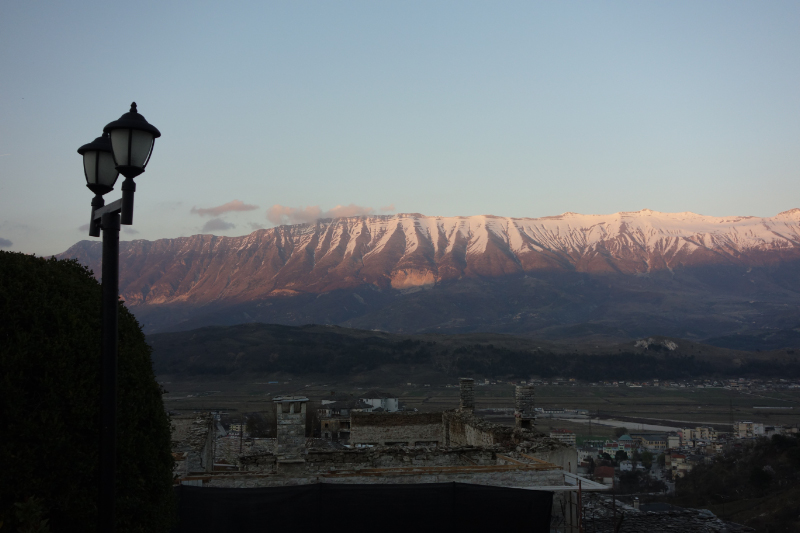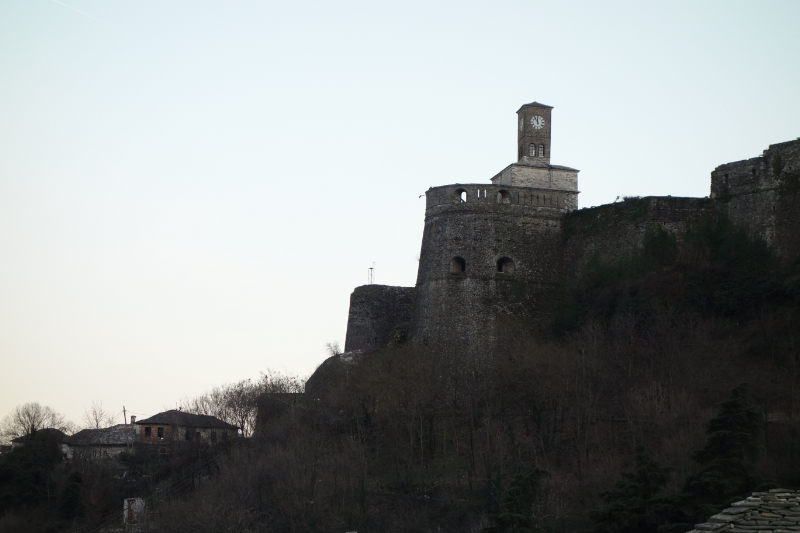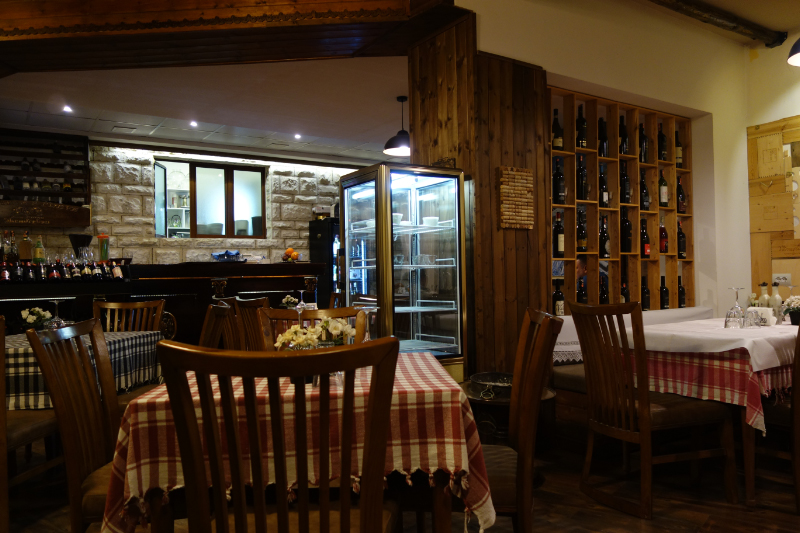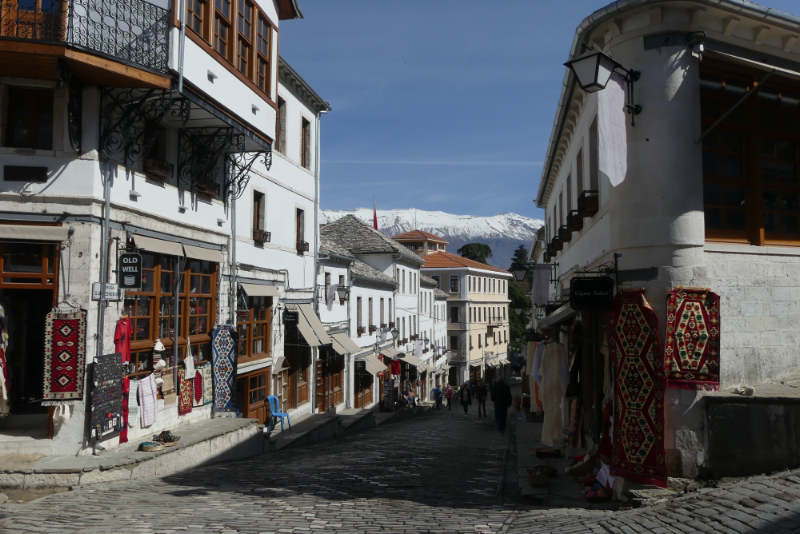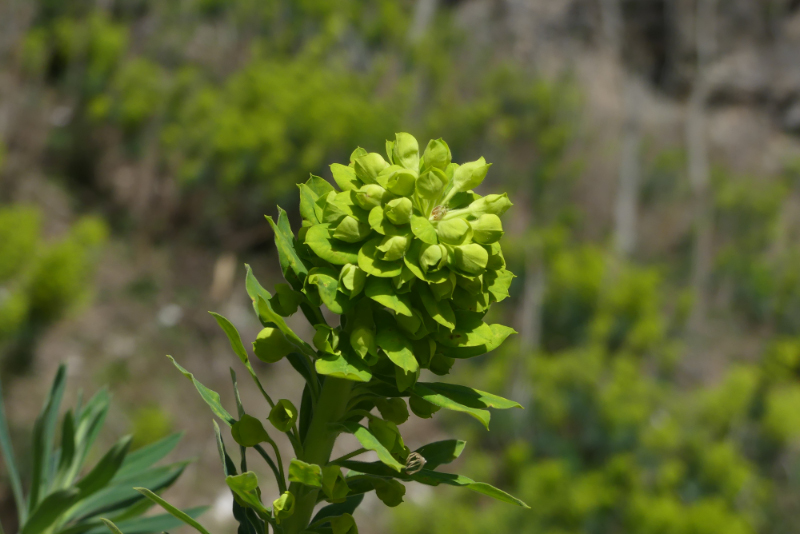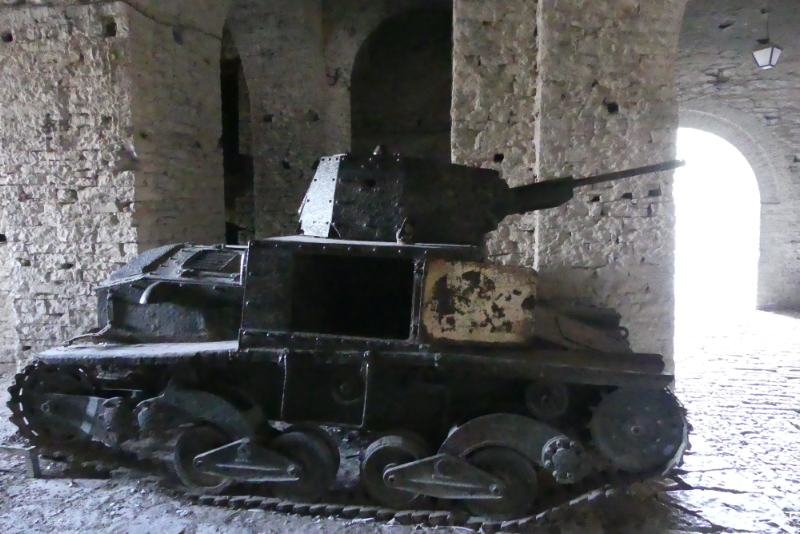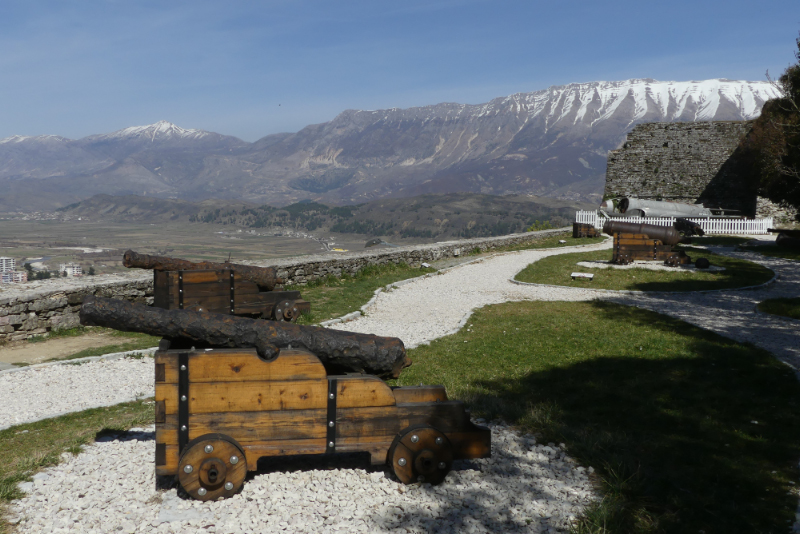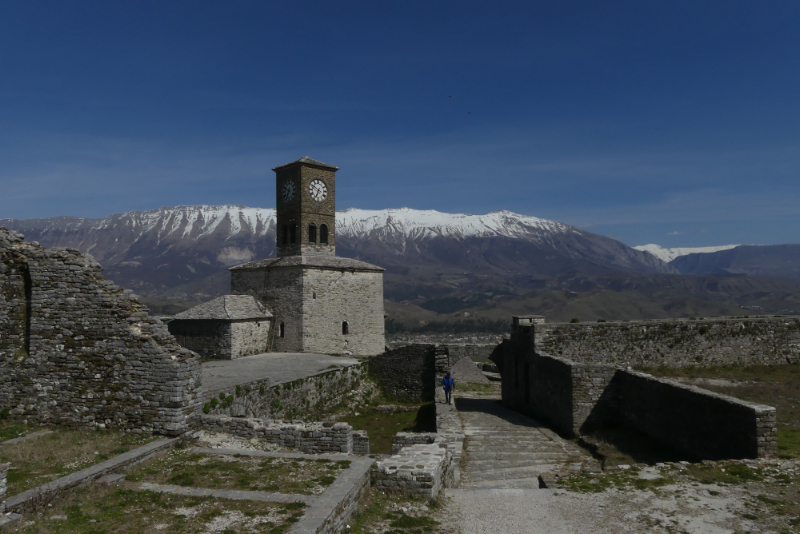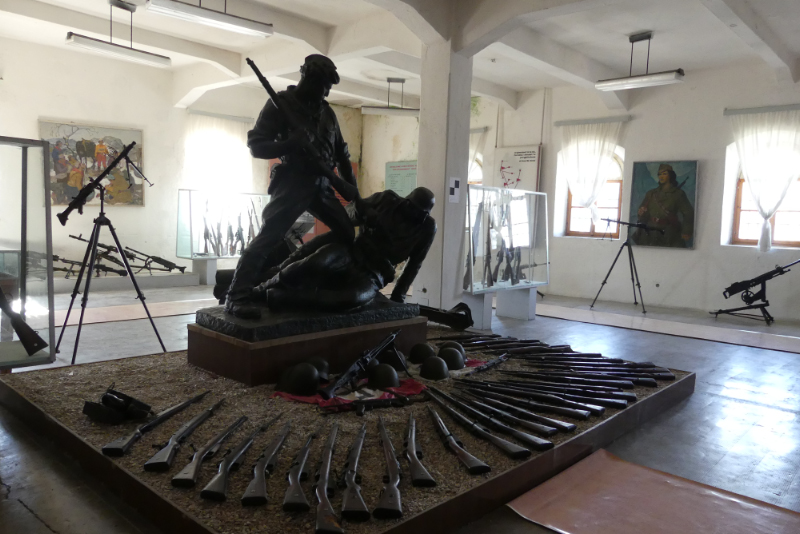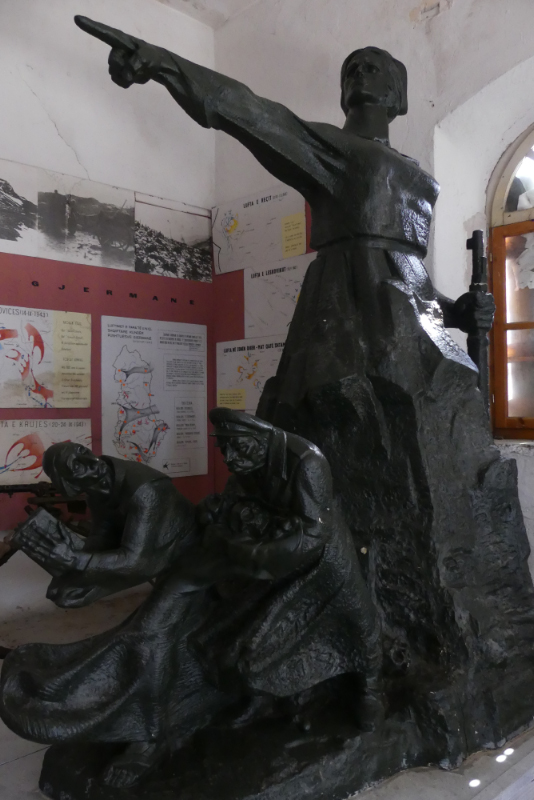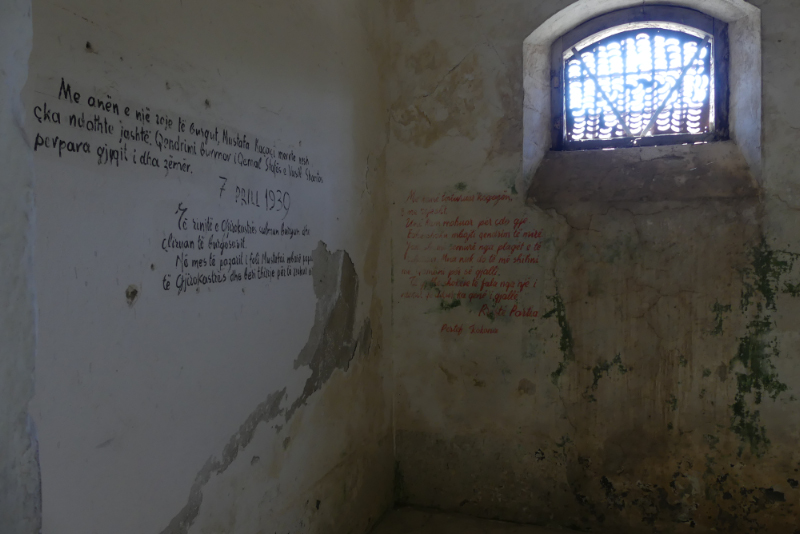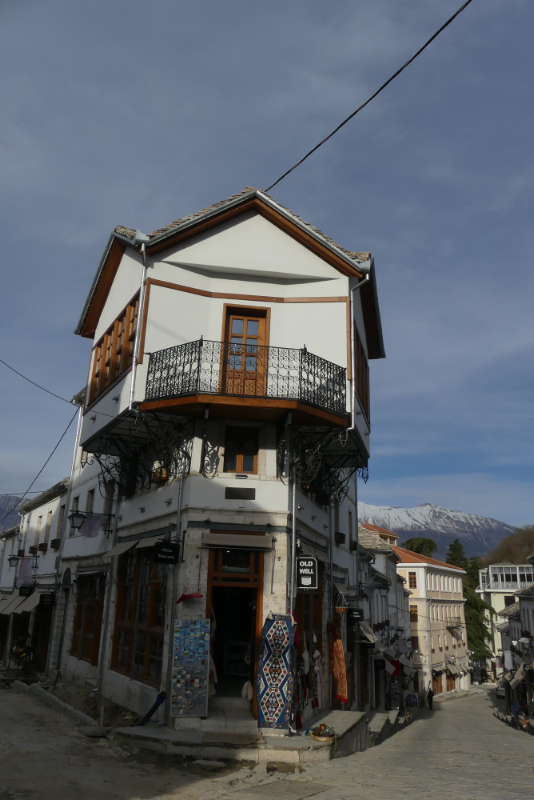Wednesday 6 to Friday 8 March
We left Berat, driving through the mostly flat countryside. Agriculture is carried out in very small allotments with varied crops and orchards. There are lots of plastic houses where tomatoes and strawberries are grown. Olives, grape vines and fruit trees displaying pink and white blossoms were growing in small narrow fields, mixed with rows of grains and vegetables. A lot of manual work is involved, the tracts of land are generally too small for tractors.
Where there is a hill, olives are grown. We had already found that olives are an important part of the diet for breakfast, lunch and dinner.
It was recommended that we stay on main roads, although it appeared a longer distance, as the roads across the mountains are windy and unreliable.
We left the flat agricultural land and were driving south towards the snow line, wending our way around chains of mountains. It was getting noticeably colder, so I appreciated my doona coat.
Our next destination Gjirokastër is an amazing city on the edge of the Gjerë Mountains with the biggest fortress in the Balkans. It is known as a stone town, utilising the local stone to build its paths, houses and even roofs. It is a well-preserved Ottoman town and is a UNESCO World Heritage site ‘built by farmers of large estate’.
Once again, travelling out of season caused some discomfort. In order to maintain it’s UNESCO credentials, utility work such as putting water and power underground was necessary, and the quiet month of March appeared a good time to undertake the work. Cobblestone roads were dug up and footpaths were demolished. In some places it was even impossible to get into the shops.
Our hotel was up a steep, dug up road, so our host had to help us drag our luggage up the hill. Once again it turned out that we were the only guests of the hotel.
We stopped in a tiny bar for a pre-dinner drink and the owner, who spoke very good English, was totally disheartened by the renovations, exclaiming that the government pockets so much money.
The castle dominates the town and overlooks the strategically important route along the Drino River Valley. It was a strategic location for Ottoman Invasions, Hellenic Armies and Italians Fascists. It is even the birthplace of Enver Hoxha.
We visited the fortress. Of course, there was a steep hill to climb to get the magnificent view over the valley. The castle itself was amazing with long arched corridors and dungeons and clock towers and gate houses.
It had been modified over many centuries, most recently by King Zog to accommodate a prison, which was used during the communist period, until the 1980s to house political prisoners.
There was a wonderful story about the cannons that dotted the fortress overlooking the valley. This is how the information panel explained the story.
Ali Pasha of Tepelena (1740-1822) was a forceful Albanian ruler who controlled large parts of the Ottoman Empire’s European territories. During his reign over Gjirokastër, from 1811-1820, the castle housed a strong military garrison. These cannons tell a tale of foreign relations between the Ottoman and British Empires, and Ali Pasha’s quest for supremacy.
Providing support in the form of arms was as central to international power play in the past, as it is now. The sultans of the Ottoman Empire limited the supply of weapons to far-flung garrisons to prevent local rulers from gaining too much control. So, as Ali Pasha sought to expand his dominion, he looked to Britain to build his arsenal. Ali Pasha agreed to help Britain against French advance on the Southern Balkans during the Napoleonic Wars (1803-1815). In exchange, Britain supplied him with a range of cannons and two corvettes (small warships).
Ali Pasha’s constant pursuit of power was his downfall. He finally lost favour with the Ottoman central government and was declared a rebel in 1820. Ali Pasha was assassinated by soldiers of Sultan Mahmud II in Ioannina, in northern Greece.
Lord Byron had visited the sultan and had written that Napoleon had twice offered to make him king, but he preferred the English to the French. They both courted him.
Another point of amusement at the fortress was the Plane with Two Tales, or how history can be interpreted in multiple ways.
When told from two opposing sides, the same story can take on completely different meanings. One such story is how this aircraft ended up in Gjirokastër Castle.
The facts:
This is a Lockheed T-33 Shooting Star, a common training and reconnaissance aircraft of the US Air Force. In December 1957 it landed at Rinas Airport, near Tiranë. After several weeks, the pilot returned to the US, but the aircraft remained in Albania. The plane was brought to Gjirokastër in the mid-1970s, to be displayed in the Arms Museum of the castle.
The US version:
According to US newspaper reports from January 1958, the pilot was flying from the US airbase in Chateauroux, France to Naples, Italy. Running low on fuel, he made an emergency landing in Albania.
The Albanian communist regime’s version:
According to Radio Tiranë broadcasts from the same time, pilots of the Albanian People’s Army intercepted a US spy plane in Albanian airspace and forced it to land at Rinas Airport.
The castle within the fortress houses a History Museum and an Arms Museum. It was difficult for us to interpret the significance of the artefacts on display, it was most certainly aimed at locals, featuring captured artillery and memorabilia of the Communist resistance against the German occupation during WWII.
We tried to visit other places of interest in Girokastër, but they were all closed, with promises to re-open in April. We were a month too early.
Eating was also a challenge – the local restaurant just a few metres up the road was the only establishment that appeared to offer a meal. We did however eat well there.
Before departing this wonderful town we stopped at Bar Restaurant Rrapi, a local coffee shop. The sun was shining and promising a little warmth and the patio was nearly full. All the patrons were men, of varying ages. Silence descended and eyes turned and stared as Bruce and I sat down to order a short black. Clearly not a place frequented by women.
e_header.jpg)


